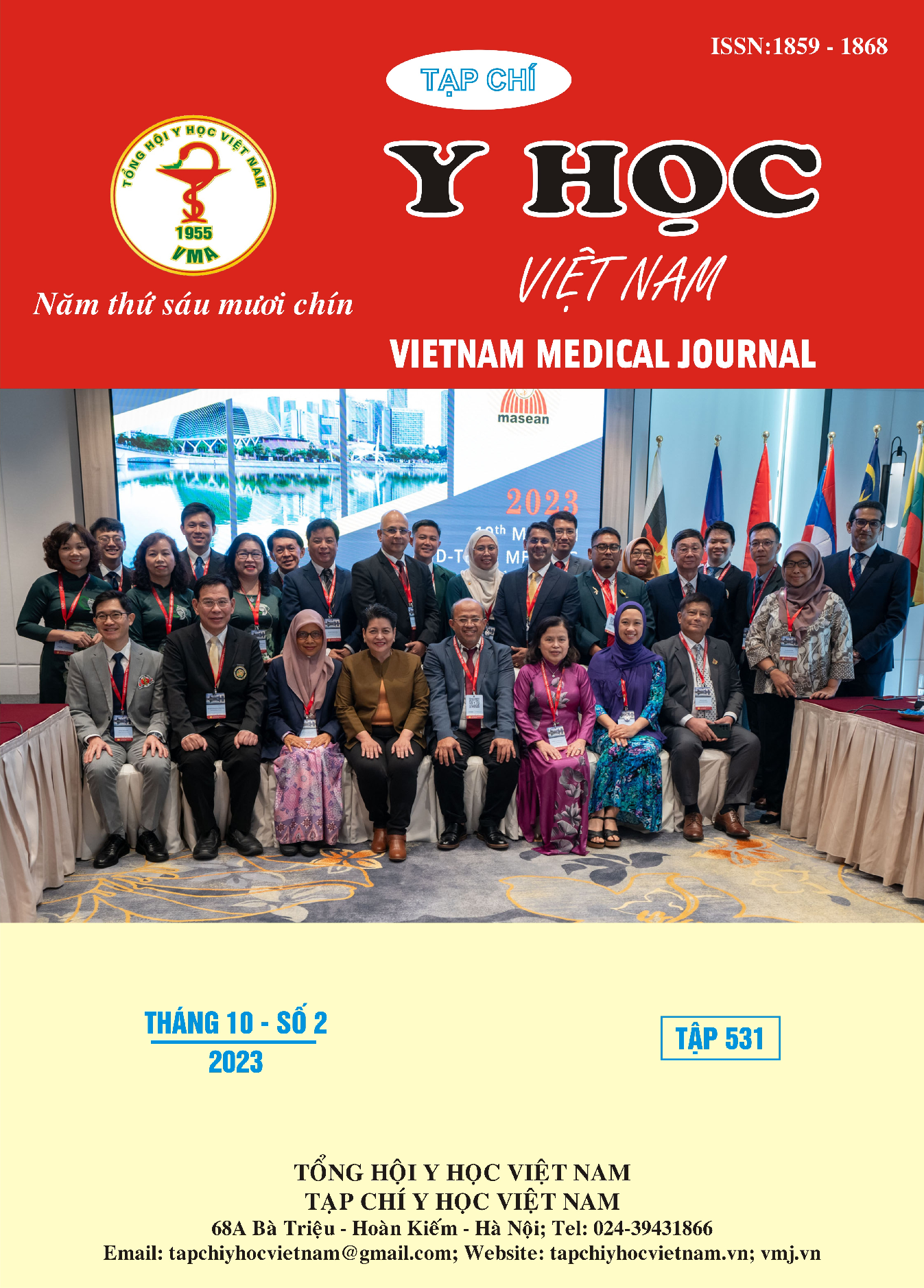CLINICAL CHARACTERISTICS, LABORATORY FINDINGS AND CHRONIC PAIN FEATURES IN ELDERLY PATIENTS WITH PRIMARY KNEE OSTEOARTHRITIS
Main Article Content
Abstract
Objectives: To describe clinical characteristics, laboratory findings, and chronic pain features in elderly patients with primary knee osteoarthritis. Subjects and methods: A descriptive cross-sectional study on 199 patients ³ 60 years old diagnosed with primary knee osteoarthritis according to the ACR 1991 criteria who were being treated at the National Geriatric Hospital from October 2021 to August 2022. Results: the most common clinical symptom is chronic knee pain (84.9%), crunching joints (39.7%), and signs of wood shavings (38.7%). The proportion of patients with stage I, II, III, and IV on knee X-ray were 22.4%; 48%; 23.4%, and 2.4%, respectively. Knee ultrasound results showed that 38.1% of patients had joint effusion; 46.2% of patients had thickened synovial membrane; 87.4% of patients had bone spurs. 45% of patients have chronic pain duration from 3-6 months, and 56.4% of pain lasts more than 6 months. The total WOMAC score was 31.5 ± 19.9. The average VAS score at rest was: 3.04 ± 1.82; when walking was: 4.85 ± 2.23 and when climbing stairs was: 5.5 ± 2.13. Conclusion: Main clinical symptoms were knee pain, and knee OA stage II-III, with spine-shaped, thickened activity. The rate of chronic knee pain was 84.9%; persists repeatedly for 6 months and affects the patient's daily activities.
Article Details
Keywords
Chronic pain, Elderly, Osteoarthritis of the knee.
References
2. Woolf A.D, Bruce Pfleger (2003). Burden of major musculoskeletal condition. Bull World Health Organ. 2003, 81(9): 646-56.
3. Harald Breivik, Beverly Collett (2006). Survey of chronic pain in Europe: prevalence, impact on daily life, and treatment. Eur J Pain, 2006 May, 10(4): 287-333.
4. Bùi Hải Bình (2016), Nghiên cứu điều trị bệnh thoái hóa khớp gối nguyên phát bằng liệu pháp huyết tương giàu tiểu cầu tự thân, Luận án Tiến sỹ - Trường ĐHY Hà Nội.
5. Nguyễn Thị Oanh (2019), Khảo sát tình trạng đau của bệnh nhân thoái hóa khớp gối nguyên phát qua chỉ số ICOAP, Luận văn Thạc sỹ - Trường ĐHY Hà nội.
6. Yasser Rehman et al. (2020). More Severe Radiographic Osteoarthritis Is Associated With Increased Improvement in Patients’ Health State Following a Total Knee Arthroplasty. The Journal of Arthroplasty, Primary knee, Volume 35, Issue 11, p3131-3137.
7. Sow Nam Yeo et al. (2009). Pain prevalence in Singapore. Ann Acad Med Singapore, 38(11): 937-42.
8. Nguyễn Trung Anh và CS (2022), “Đặc điểm đau mạn tính ở bệnh nhân Đái tháo đường týp 2 cao tuổi tại bệnh viện Lão khoa Trung ương”. Doi:10.47122/vjde.2022.52.3
9. Kheiry F et al. (2019). The prevalence and associated factors of chronic pain in nurses in Iran. Revista Latinoamericana de Hipertensión ISSN: 1856-4550.


